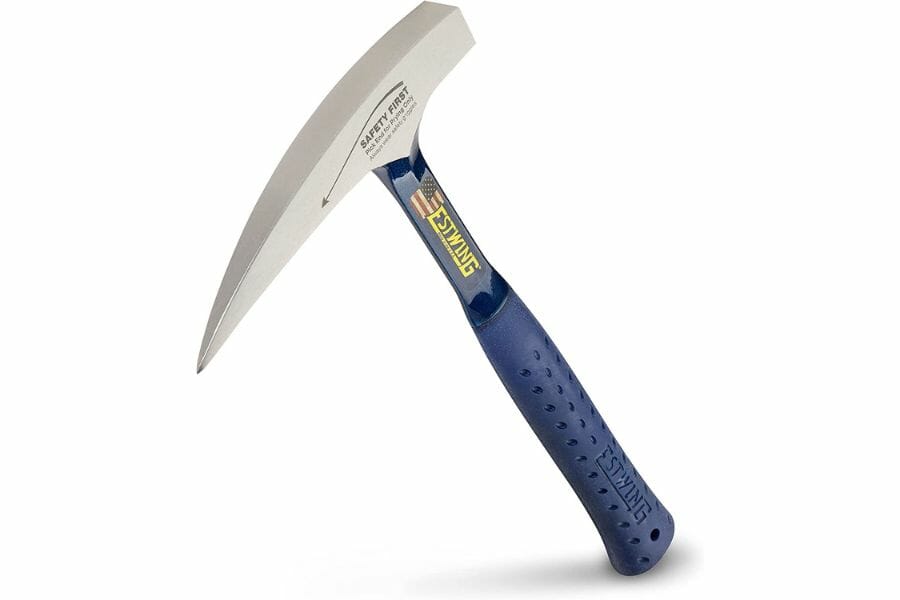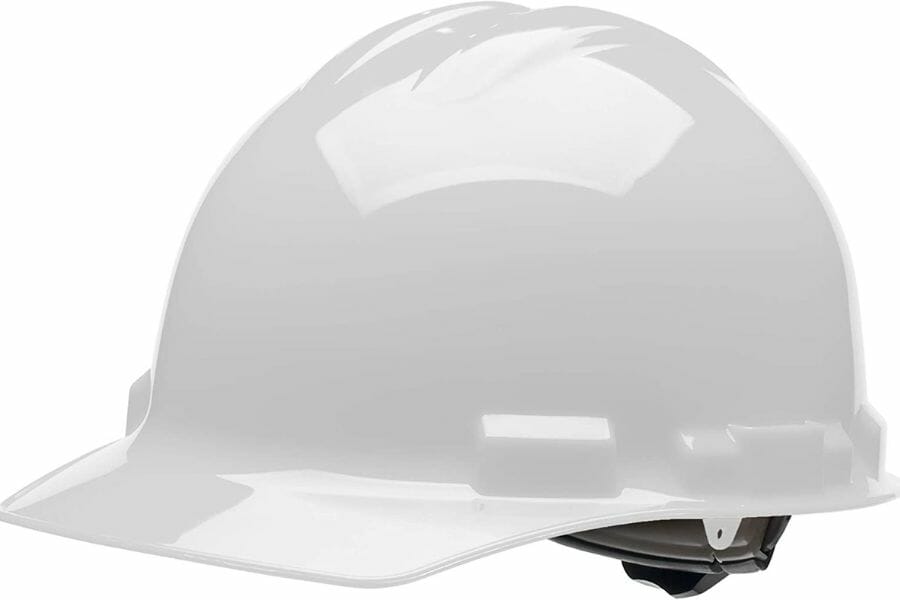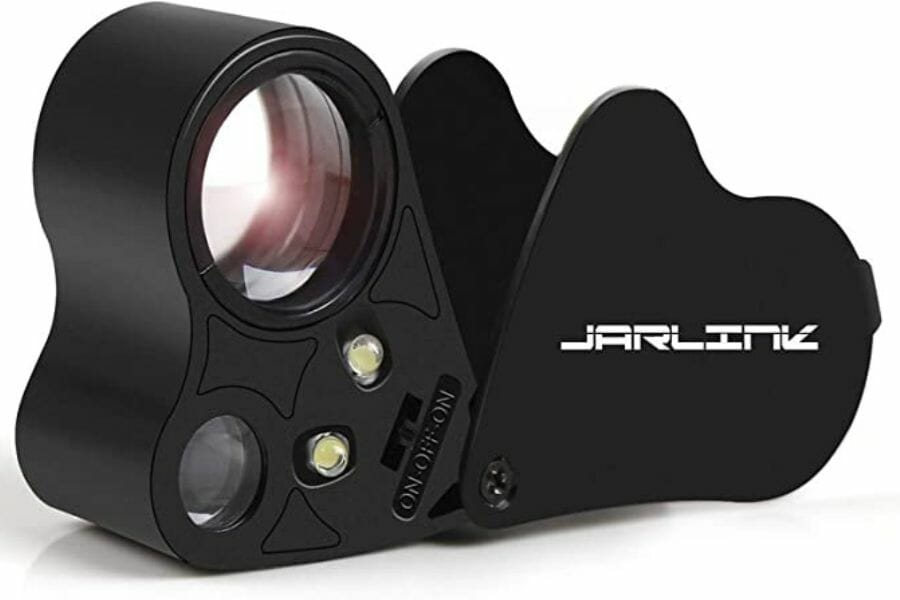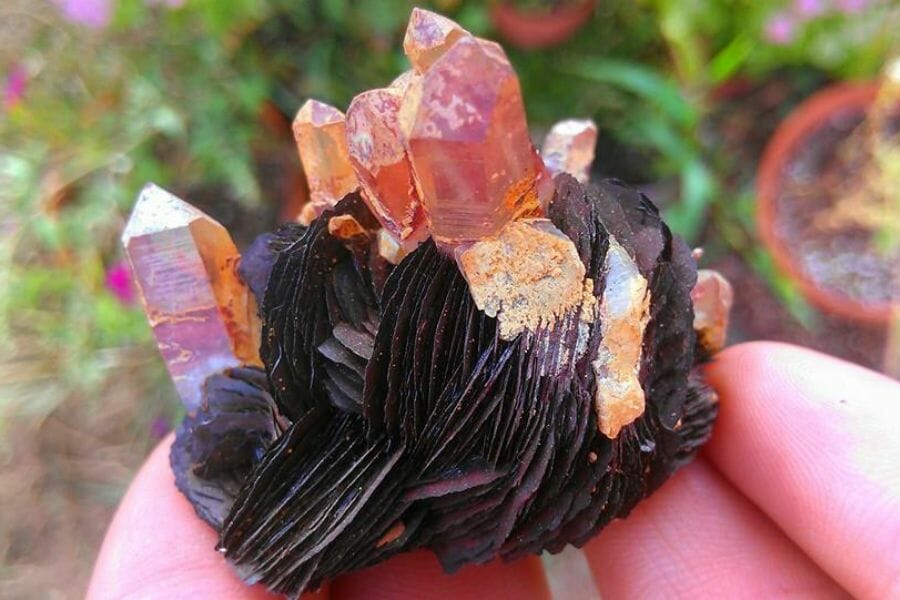It doesn’t matter if you’re a novice or an experienced prospector, finding a gem mine near you that is accessible and mineable is often a daunting task. There isn’t a lot of great information around and what you can find is often outdated pretty quickly. Fortunately, we can help!
As a group of passionate gem miners, we have put together a TON of local guides to make mining for gems and crystals near you much easier than it ever has been in the past. We can’t promise that you will always find what you’re looking for but we can show you where other gem seekers have had a lot of success in the past.
In this guide, we’re going to cover the most important things you need to consider when deciding on a collection site including:
- Accessibility
- Safety
- Quality and quantity of gems available
- Climate
- Gem mining laws and regulations
- Equipment requirements
- Ease of collection
Our goal is to provide a range of recommendations based on experience levels, gem types, and the level of physical activity necessary to access any particular site.
Where To Find Gem Mines Near You (Also Crystal Mines)
Click on the state on the map above that you are interested in finding great gem mining spots for.
We’ve put together comprehensive guides for every state colored in green.
Within each guide, you will find a wide variety of places to find gems as well as some great crystal mines. We have included recommendations for experienced miners, novices, and even recommendations for children that you would like to get interested in this great activity.
Regardless of where you are, you will be able to find some really good options nearby. We are constantly putting together new guides and adding new recommendations to our existing guides so don’t forget to check back often!
If you’re having trouble clicking on the map above (or have fat fingers like we do) you can also click on the links below:
Where to mine gems in each state:
The Gems You Can Mine

There are a huge variety of gems that are available to mine but it’s going to be VERY dependent on where you happen to be. If you want to find the complete list of gems that are mineable in your area check out the state or city guide link in the section above this one. We go in-depth based on our experiences and show you not just what gems are available but where they can be mined near you!
Some of the more interesting gems and crystals that you may be able to mine near your location include:
- Diamond
- Sapphire
- Jade
- Emeralds
- Opal
- Pearls
- Ruby
- Topaz
- Turquoise
- Beryl
There are a lot more in addition to these that are worth looking for. Check out the state and city guides above to find specific locations.
The Various Gems Sorted By Color
If you’re more of a visual person we’ve also taken the time to list out all of our favorite gems of various colors. Look through these guides to find some beauties and then go through our state guides above to find locations to mine them near you:
Where You Can Hunt For Gems and Crystals

There are a wide variety of locations where gems can be found and you will often have several options in your area. We tend to prefer places where nature has done most of the work for us in exposing the beautiful gems we’re after but there are also great opportunities to leverage the work of commercial enterprises or your own sweat!
These are the most common types of locations to find or mine for gems. If you have any of these near you they can often be a great place to start mining for crystals even if they aren’t listed in our guides above!
Creeks and rivers

Creeks and rivers can be good places to find gems because water can help to erode and expose gemstones that are buried in the soil or rock. As the water flows, it can wear away at the earth, revealing any gemstones and crystals that may be hidden within.
Additionally, the water can help to transport the gemstones, causing them to be deposited in certain areas along the creek or riverbed. These areas can then be searched by gem hunters looking for a specific type of gemstone or by people who are simply interested in collecting a variety of different types of gems.
As the water flows, it can move the gems around, separating them based on size, shape, and other characteristics. This can make it easier for gem hunters to find the gems they are looking for, as they can be more easily sorted and graded. The water can help to clean the gemstones, removing dirt and other debris that may be attached to them. This can help make finding the gemstones easier.
Beaches

Beaches are another great option because they are places where water and land meet, allowing for the erosion and deposition of gemstones. Gemstones that are formed in the earth can be carried by rivers and streams and deposited onto the beach over time.
The waves and currents of the ocean can also help to polish and shape the gemstones, making them easier to identify. You also have the added benefit of being able to find another type of gemstone that isn’t created in the earth, pearls!
Desert hikes

Deserts are often home to a variety of different types of gem deposits. Many deserts have dry, arid conditions that are ideal for the formation and preservation of some gemstones.
The extreme heat and lack of vegetation in many desert areas can help to expose gemstones that are buried in the soil or rock, making them easier to find. Deserts are also home to a variety of different types of rock formations, including mountains, cliffs, and valleys, which can provide a range of different habitats for different types of gemstones.
Use the wind and sand to your advantage!
Veins and Vugs (these can take a little work on your part)

Veins and vugs are geological formations that can be good locations to find gems but will often require a little more elbow grease to get them.
A vein is a long, narrow formation that is typically filled with minerals and gemstones. These formations can be found in a variety of different types of rock, and they can be formed by a number of different processes.
Vugs, on the other hand, are small, void spaces that are found within rocks and minerals. They can be formed by the alteration of minerals or the weathering of rock, and they can often contain a variety of different types of gemstones.
Both veins and vugs can be good locations to find gems because they are often rich in minerals and gemstones. Gem hunting in veins and vugs can be a challenging and rewarding activity but might not be best for beginners.
Mines

This is probably going to be obvious but mines are some of the best places to find gems! Funny how a place specifically designed to find gems would be good for you too right?
Mines can be found all over the world, and they can be operated by a variety of different entities, including governments, private companies, and individual prospectors. Gemstones that are mined from the earth are often of higher quality and value than those that are found in other locations, such as mine dumps or alluvial deposits.
Many old mines that no longer operate commercially are accessible to the public. Go through our location guides above to find those you can try out yourself.
Mine dumps (tailings)

Mine dumps, also known as tailings piles, are areas where waste rock and other materials that are extracted during commercial mining processes are deposited. These materials can include a variety of different minerals and gemstones that may have been present in the ore that was mined.
While the primary goal of mining is to extract valuable minerals and ores, it is not always possible to recover every single gemstone or crystal that is present in the ore. Often times they are just completely ignored! As a result, mine dumps can be a good location to find gems that were not extracted during the mining process.
Gemstones that are found in mine dumps may not be as high quality (sometimes they can get roughed up in the process) as those that are mined directly from the earth, but they can still be valuable and attractive.
Sloughs

Sloughs are wetland areas that are typically found along the edges of streams, rivers, and lakes. They are characterized by shallow, slow-moving water and a high concentration of organic matter, such as leaves and twigs.
Sloughs can be good locations to find gems because they are often home to a variety of different types of gem deposits. The organic matter in sloughs can help to break down and weather rocks and minerals, exposing any gemstones that may be present.
The slow-moving water in sloughs can help to transport and deposit gemstones in certain areas, making them easier to find. Sloughs can also be good places to find alluvial deposits, which are accumulations of gemstones that have been transported and deposited by water.
Exposed rock faces

Any location that produces a visible and accessible area to search for gemstones is preferable in our book. Rock faces are areas where the rock or soil has been exposed by natural forces, such as erosion, weathering, or tectonic activity. These exposed areas can be found in a variety of different types of landscapes, including mountains, cliffs, and valleys.
Exposed rock faces can be good places to find gems because the gemstones may be visible on the surface of the rock or may be exposed by the weathering of the rock.
Exposed rock faces can also be a good place to find veins and vugs, which are geological formations that can contain a variety of different types of gemstones as we describe above.
Quarries

Another great way to leverage the work of commercial operations is quarries. Quarries are typically found in areas where there are deposits of rock and minerals that are valuable for construction, landscaping, or other purposes.
The rock and minerals that are extracted from quarries are typically broken down into smaller pieces, which can make it easier to find any gemstones that may be present. Since most quarries exist to collect more boring rocks, the gems that are often also present are completely overlooked.
Both active and out-of-service quarries can be great places to find gems in many areas.
Road cuts

All across the country roads have been cut into the earth by the government in order to create roads and highways. This exposes a lot of crystals and gems that the construction crews typically completely overlook.
Spending some time going through the collection points of the construction debris can often yield some great finds. You can also search the sides of the road cuts to find more embedded treasures. Just be careful of any traffic when searching near the roads!
How To Prepare For Gem Mining
Proper preparation is going to be the key to your success when it comes to gem mining. You need to have a plan, know your limitations, and bring the right equipment to ensure you have fun and stay safe. If you do that, even if you don’t find every gem you’re looking for, you’re going to have an enjoyable experience.
The first thing you need to consider when preparing is your selection of tools. Tools are important when gem mining because they can help to make the process of finding and extracting gemstones more efficient and effective (saving your time and effort). There are many different types of tools that can be used in gem mining, depending on the specific type of gemstone and the location where it is being mined.
A good hammer is essential – Our favorite is the Estwing Rock Pick – 22 oz Geological Hammer with Pointed Tip

The most important tool of any gem miner is going to be your hammer or rock pick. Finding a good one in most stores is going to be difficult so we always recommend looking online. The Estwing we recommend above is small enough to be easy to carry and sturdy enough to do just about anything you would need with a hammer. Even after thousands of hits on sturdy rocks and gems they just keep going.
You might be tempted to just use a carpenter’s hammer that you find at the hardware store but we have to recommend against it. The steel in those hammers isn’t made to hit hard rocks and gems and it’s pretty common for dangerous shards of metal to flake off at high speeds!
Chisels – The KENDO 3-Pieces Heavy Duty All Purpose Cold Chisel Set is a good starter set

Most of us got started using flathead screwdrivers as chisels and quickly moved on to more durable chisels after those screwdrivers quickly broke on us. Screwdrivers work for soft rocks but anything substantial will quickly dull or break them.
You’re likely going to be spending a lot of time breaking up works or prying gems out of crevices so a durable set of chisels will save you a TON of time and frustration. You don’t need anything particularly fancy which is why we suggest a three-piece set like the one recommended above. If you take care of them they will last a REALLY long time.
Safety goggles – Our favorite is the DEWALT DPG82-11C Concealer Clear Anti-Fog Dual Mold Safety Goggle

If you’re going to be hitting rocks with hammers there is going to be a lot of rock chips, dust, and dirt flying around at very high speeds. You absolutely want to find a pair of comfortable goggles to wear that protect your eyes and aren’t constantly fogging up.
While they aren’t specifically designed for gem mining, the Dewalt goggles we list above have been the best combination of safety, comfort, and price that we have found. They are super popular with construction works that live in them all day and we’ve found them to be great as well for a pretty cheap price.
Gem mining is a lot more difficult without eyes so do yourself a favor and protect yours!
Gloves – Heavy leather is best

A good pair of heavy leather work gloves that you can get from any decent hardware store are another piece of essential equipment. We don’t have any specific recommendations since it’s ultimately down to your own comfort.
Your hands are going to be very close to a lot of flying rocks shooting in your direction. If you don’t have good hand protection you will quickly pick up a lot of cuts and bruises. It’s also very easy to pinch or scrape your hands on rocks as you move them around.
Boots – Steel-toed is best

Many gem mining sites can require walking through some difficult terrain to get to. On top of that, rocks are going to be constantly falling around your feet while mining for gems. You want to find yourself a solid pair of steel-toed boots to make getting to your site easy in addition to keeping your feet safe.
We know a lot of gem miners that started off wearing regular boots and quickly moved to steel-toed options after the first big rock fell onto their toes! Save yourself the pain of hobbling back to your car and buy them first.
https://amzn.to/434a3ZOHard hat – A basic hard hat like the Malta Suspension Hard Hat works well

If you’re going to be spending any time in an actual mine or collecting near rock walls a hard hat is going to be very important. You don’t need anything super expensive, you just want something comfortable that will protect you from falling rocks and debris.
If you’re going to be doing a lot of mining in a cave or darker places you should also consider a headlamp like this Sonik Headlamp that clips onto your hard hat. You won’t need to set up additional lights and trying to mine for gems while holding a flashlight is pretty much impossible.
Hand lens – The JARLINK 30X 60X Illuminated Jewelers Loupe Magnifier is great

An inexpensive hand lens, especially one that has its own light source like the one recommended above, is really handy when it comes to examining the different rocks and gems you come across. Often a little magnification is just what you need to determine what it is you found.
You want something that has at least a 10X or 20X magnification and higher can be better. Make sure that the lens you buy has a guard on it so it doesn’t get scratched up as you bring it back and forth from your dig site.
A guide to gem identification – Our favorite is Collecting Rocks, Gems and Minerals: Identification, Values and Lapidary Uses

If you’re new to gem mining or plan to mine in a new area you want to bring along a handy guide to identifying what you find. The last thing you want to do is leave a rare gem or crystal behind because you misidentify it!
There are a lot of resources you can use online to identify the gems you find but you can’t count on have any decent mobile service when in a mine or at a remote gem site! Making a habit of bringing an easy-to-use guidebook has been really handy for us.
Maps and GPS

Carefully planning the locations you are going to visit and how to get there is an essential step to any gem-hunting trip. If you’re going to a new location, especially one that is remote, it can be very easy to get lost in an area that doesn’t have GPS capabilities.
Always make sure you bring a physical map, or save the map on your phone so that you can view it without internet service. Many of the locations we recommend can be remote and you don’t want to be stranded and have to walk miles back to civilization!
Understanding Gem Mining Laws & Regulations

Before you start off on your first dig you need to understand the various laws and regulations in force at the site you’re considering. Gem mining sites are typically broken up into three types of locations:
- Federal public lands
- State public lands
- Private lands
Each of these has its own particular laws and rules that any gem miner would need to follow.
Collecting on federal public lands
The US Department of Agriculture Forest Service is responsible for setting the rules and regulations for collecting gems and rocks on federal land and within federal parks. Before you begin collecting on federal property visit their website above and familiarize yourself with their rules.
If you are planning to collect within a designated national park you should also visit that park’s individual website to find out about rules specific to that park.
Collecting on state private lands
Each state has its own government agency that handles regulating the mining and collection of gems on their state-owned lands and parks. You can find links to those regulations in the state guides listed earlier in this article.
Collecting on private lands
You always want to get permission from private landowners first if you plan on collecting gems from their property. They own the land and that means all of the rocks and gems on it and within it. Many landowners are open to collectors as long as you are courteous, don’t make a mess, and follow any rules they set out.
It can be tempting to collect without seeking permission first but the last thing you want is to be hit with a trespassing or theft charge!


